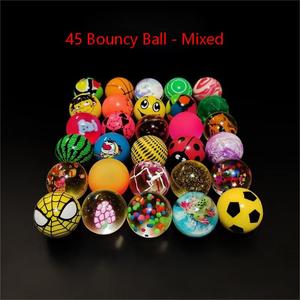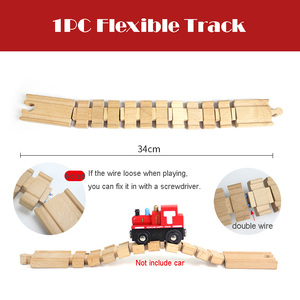(138842 products available)























































































































































































All toys come in various forms, each serving distinct purposes and catering to different age groups, interests, and developmental needs. Here are some detailed descriptions of various toy types:
Action Figures and Dolls
These toys typically depict characters from movies, TV shows, or comics. They come complete with accessories and costumes. On the other hand, dolls are often modeled after humans, animals, or fantasy creatures. They are used in role-playing and imaginative games.
Building and Construction Toys
These are sets of small parts and pieces that can be connected or assembled to create different structures and buildings. They are designed to enhance spatial skills, creativity, and fine motor skills. For instance, Lego sets, Knex, and Mega Bloks.
Board Games and Puzzles
Board games usually involve players in strategic or chance-based activities that require them to move pieces around a game board. They also come with rules that are outlined in a rulebook. Puzzles, on the other hand, are problem-solving activities that come in the form of jigsaw puzzles, where pieces are fitted together to form a cohesive image.
Educational Toys
These toys are intended to make learning enjoyable and captivating. They cover a broad spectrum, from simple alphabet blocks to intricate science kits and electronic learning devices. This type of toy is used to support cognitive development in a playful manner.
Electronic Toys
These toys range from simple battery-operated devices that make noises or move to sophisticated interactive toys that can respond to a child's voice, play music, or even connect to the internet. Electronic toys include tablets for kids, robots, and learning computers.
Outdoor and Sports Toys
These toys are designed to be used outdoors. They include sports equipment, such as balls, bats, and bicycles, as well as other items such as kites, scooters, and jump ropes. Their main purpose is to encourage physical activity and outdoor play.
Plush Toys and Stuffed Animals
These toys are usually characterized by their soft and huggable nature. They are often imitations of animals, fantasy creatures, or characters from various media. Stuffed animals provide comfort and companionship, especially for younger children.
Vehicle and Transportation Toys
These toys range from simple wooden cars and trains to detailed model planes, boats, and rockets. They are made to be appealing to children fascinated by different modes of transportation, as well as to collectors who enjoy intricate detailing.
Role Play and Imaginative Toys
These toys are delineated to mimic items found in daily life. They include kitchen sets, tool sets, doctor kits, and more. Their purpose is to allow children to engage in role-playing and imaginative play, helping them develop social and emotional skills.
When it comes to selecting the right toys, there are several factors that should be put into consideration. This is to ensure that the toys are appropriate for the child and that they will provide hours of entertainment. One should consider the child's age. This is because children of different ages engage with toys in different ways. For instance, infants benefit from toys that stimulate their senses. These toys include soft dolls with varying textures, rattles, and brightly colored objects. On the other hand, toddlers are more interested in toys that encourage mobility and interaction, such as balls, building blocks, and push-along toys.
Moreover, preschoolers engage in imaginative play and benefit from art and craft toys, dolls, action figures, and playsets. Also, school-age children are more interested in toys that challenge their intellect and provide a sense of achievement, such as board games, puzzles, science kits, and construction sets.
One should also consider the child's interests. This is because children are more likely to play with toys that align with their personal preferences. For example, a child fascinated by dinosaurs will likely enjoy dinosaur-themed toys, books, and games. Furthermore, the material of the toy is crucial to its durability and safety. Toys made of high-quality materials, such as sturdy plastics, wood, and metal, are more likely to withstand rough play. Additionally, materials should be non-toxic and free from harmful chemicals, particularly for younger children who tend to put toys in their mouths.
Moreover, the educational value of a toy should not be overlooked. Toys that promote learning and development are preferable by many parents. These toys include STEM kits, puzzles, and interactive electronic toys. Also, the safety of the toy is paramount. One should always ensure that the toys do not have small parts that can pose choking hazards. In addition, toys with sharp edges, rough surfaces, or easily breakable components should be avoided.
Furthermore, the toy's price and the budget one has set aside for the toy is a crucial consideration. While some toys can be expensive, this does not always mean they are of high quality. One should look for toys that offer the best value for money. Finally, one should consider the long-term play value of a toy. Toys that can be used in multiple ways or that can grow with a child are more beneficial in the long run.
Sensory development
All toys with varying textures, colors, and sounds stimulate the senses of touch, sight, and hearing, thus helping to refine and develop the five senses.
Education
Some toys introduce numbers and letters to children at a young age and even help them learn how to read and write. These toys include educational games and puzzles.
Social development
When children play with others using toys like dolls or action figures, they engage in conversations and create scenarios. This helps them understand how to interact with others, thus improving their social skills.
Durability
All toys are made from materials that can endure rough handling and frequent use by children. This ensures the toys do not break easily, thus lasting longer.
Safety
All toys undergo thorough testing to ensure they meet the safety standards. They are made from non-toxic materials that are safe for children to play with.
Portability
Some toys can easily be moved from one place to another, or one storage to another due to their lightweight and compact design. These toys ensure that children can carry them wherever they go.
Aesthetics
Toys have attractive colors and designs that appeal to children. This ensures that children are drawn to the toys and want to play with them.
Functionality
Toys are designed to be easy to use and operate. For instance, battery-operated toys have simple on and off switches that are easy to find.
Age appropriateness
All toys are designed with a specific age group in mind. For example, toys for younger kids are simple and have soft edges, while those for older kids are more complex.
The safety and quality of toys for kids are of the utmost importance to manufacturers and parents alike. Ensuring that playthings are safe for children to use is paramount, as it can prevent accidents and injuries. To guarantee the safety of toys, manufacturers must adhere to strict guidelines and regulations set by organizations such as the American Society for Testing and Materials (ASTM) and the Consumer Product Safety Commission (CPSC).
These organizations require toys to undergo rigorous testing for mechanical, physical, and chemical hazards. This includes checking for sharp edges, small parts that could cause choking, and toxic materials that could be ingested. Additionally, toys should be regularly inspected for quality control purposes, ensuring they meet the highest standards of safety. Quality control inspections can identify defects or malfunctions that could potentially harm children.
Parents play a vital role in ensuring their children's safety by carefully selecting age-appropriate toys and monitoring their use. It is essential to follow the manufacturer's guidelines and recommendations, as well as to stay informed about any recalls or safety warnings issued. By prioritizing the safety and quality of toys, manufacturers and parents can create a safe and enjoyable play experience for children.
Q1: Why are toys important for child development?
A1: Toys facilitate learning in a fun environment. Different toys stimulate various senses, encouraging cognitive development, motor skills, and coordination.
Q2: How can one ensure that toys are safe for children?
A2: One should buy toys appropriate for the child's age and follow the manufacturer's recommendations. Also, avoid toys with small parts for younger kids and those with long strings that may cause choking hazards.
Q3: What types of toys are suitable for outdoor play?
A3: Riding toys, balls, and other sports equipment are examples of suitable outdoor toys. These toys encourage kids to explore their surroundings and engage in physical activity.
Q4: Which toys are suitable for stimulating a child's imagination?
A4: Toys like dolls, action figures, and building sets are suitable for imaginative play. These toys enable children to create stories and scenarios, enhancing their creativity.
Q5: Which toys are beneficial for teaching kids new concepts?
A5: Educational toys, puzzles, and problem-solving games are ideal for learning. These toys challenge children and help them understand new ideas in a more straightforward way.